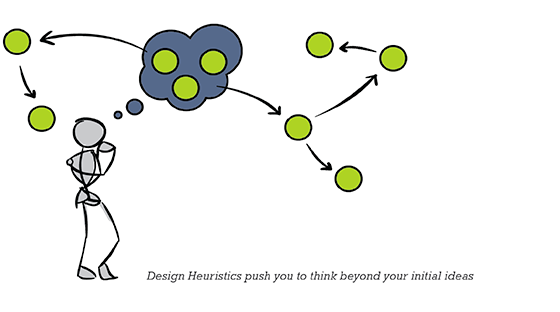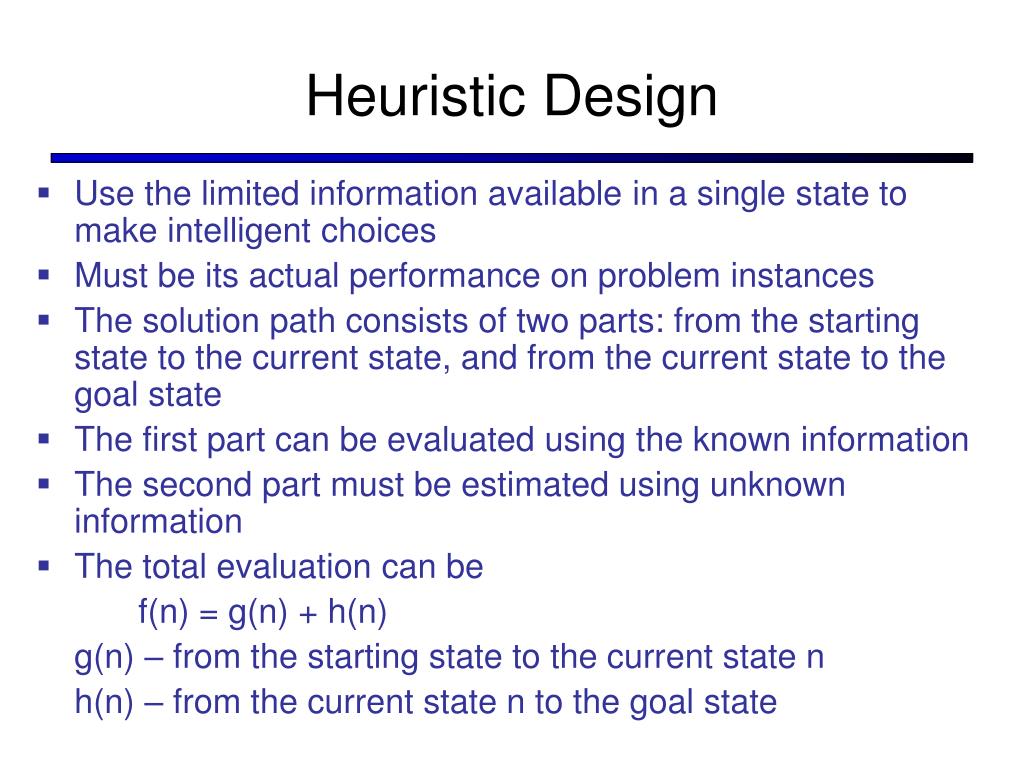Table Of Content
- Design for Immersive Experience: Role of Spatial Audio in Extended Reality Applications
- Error Prevention
- Design Patterns for Mobile Augmented Reality User Interfaces - An Incremental Review
- The Practical Guide to Usability
- Help Users Recognize, Diagnose, and Recover from Errors
- Nielsen Norman Group’s ten usability heuristics

We hypothesized there would be evidence of heuristic strategies in both engineers’ and industrial designers’ concepts, and that the application of design heuristics during idea generation would support exploration of more potential designs. We expected participants in industrial design to generate concepts focused on aesthetics, emotion, and user engagement, and engineers to focus on function and technical product features. One thing to note here is that usability heuristics should not be confused with usability testing.
Design for Immersive Experience: Role of Spatial Audio in Extended Reality Applications

Usability heuristics serve as a handbook for the design teams, providing them with a checklist they can use to evaluate a user interface design. The presence of these heuristics brings a logical order to the evaluation and testing phase of any design. Therefore, it becomes easy for the design teams to collaborate, stay on the same page, and evaluate all designs in a standardized way. In the absence of such heuristics, it can get hard to find common ground as the field of UI/UX design is unique, with a lot of room for creativity. The usability inspection method based on heuristic evaluation is attributed to Jakob Nielsen. According to Nielsen’s research and findings, there are ten usability heuristics that designers need to be aware of when assessing the quality of any design.
Error Prevention
This course is designed to help you turn your good intentions into great products through a mixture of teaching both the theoretical guidelines as well as practical applications surrounding usability. This set focuses on essential principles such as user control, error prevention, and consistency, offering a straightforward approach to improving user experience by addressing the most prevalent and impactful aspects of interface design. Table 4 displays the design heuristics within each concept from Industrial Designer 7. The total number of heuristics increased in each sequential concept while the changes already introduced were maintained. Engineering has been characterized as combining scientific discoveries with principles targeted at developing useful products for bettering human life (Pahl & Beitz Reference Pahl and Beitz1996).
Design Patterns for Mobile Augmented Reality User Interfaces - An Incremental Review
Emphasis is often placed on improving function by solving technical problems. However, engineering students have reported creative thinking to be less natural for them than technical thinking (Court Reference Court1998). As a result, it can be challenging for engineers to generate diverse creative concepts (Christiaans & Venselaar Reference Christiaans and Venselaar2005). The ideation stage promotes creativity when many different designs are generated for later evaluation (Christiaans & Dorst Reference Christiaans and Dorst1992). Fluency has long been used as a measure of creative ability (Clark & Mirels Reference Clark and Mirels1970; Torrance Reference Torrance1972), and generating more ideas will logically allow the selection of a better idea from the set. But at times, continuing to generate a diverse set of ideas may prove challenging.
Presenting in person will also help you to justify and add detail to your findings which may be missing from a report that is simply shared via email. This final stage of the evaluation brings all the evaluators back together to share their findings. As part of the debrief, one member of the group should write down all the issues in one shareable document so that each member of the group has a complete list. Prevent users from making errors by offering them the option to confirm their choices before they’ve been made permanent. This can be done with pop-ups or checkboxes that give the user a moment to reconsider the action they’ve taken.
Help Users Recognize, Diagnose, and Recover from Errors
Unintelligible descriptions and no way to recover from the errors are terrible for the user experience. Before you start the evaluation, you’ll want to ensure that all the evaluators are on the same page, from aligning expectations of the evaluation itself, to how success is defined, and what each individual’s role will be during the session. As we’ve mentioned, not everyone uses the same set of heuristics as we’ve chosen here. Although there’s significant crossover between different schools of thought, you might find that some principles align better with your methodology than others. Due to the list of principles used to measure the product’s usability against, the team is clear about what the outcome of the process should be and are therefore more likely to be aligned on its purpose and goals.
Optimal design of planar steel frame structures utilizing meta-heuristic optimization algorithms - ScienceDirect.com
Optimal design of planar steel frame structures utilizing meta-heuristic optimization algorithms.
Posted: Sat, 21 Mar 2020 15:19:57 GMT [source]
This began with a base set of design heuristics from previous studies (Yilmaz & Seifert Reference Yilmaz and Seifert2010, Reference Yilmaz and Seifert2011). The coders, one with a background in industrial design and the other in engineering design, also added new design heuristics to better describe the concepts apparent in the protocols. The coders reviewed the entire dataset independently and then resolved any disagreement through discussion.
Literature on Heuristic Evaluation (HE)
Heuristics in software engineering act as a compass, providing direction when faced with design challenges. We all experience these 3 cognitive blind spots at work, frequently unaware of their costs in terms of productivity and misunderstanding. We would like to thank James L. Christian for his contribution to data analysis and coding of the heuristics. Special thanks go to Jan-Henrik Andersen and Panos Papalambros for their contributions to the genesis of this work. During user testing, identify steps which are likely to cause an error and solve for them. This would prevent frustration from having to face the error and undo the changes.
Unlike other UX design methodologies, which can take time, resources, technology, or numerous team members, a heuristic evaluation is inexpensive to implement and doesn’t involve the recruitment of candidates in order to be effectively conducted. For this reason, designers should only include information, elements, and actions which are strictly necessary to the completion of the user’s goals. Any additional information will only distract the user and reduce the visibility of the elements they are actively seeking. In addition to staying consistent within an interface itself, designers should seek to follow industry conventions too, adopting similar language and actions to others in the field.

User manuals, reference articles, FAQs, and tutorials are extremely helpful in understanding a product or service and using it in the best possible way. However, it is important to write these documents in a simple manner, using plain language, so as not to confuse or overwhelm the users. Good documentation adds value to the user experience and helps the audience interact efficiently with a design. A new user who is entering a learning curve [6] will always have different needs than the professional who’s using it a few hours every day. Power users might appreciate advanced options, shortcuts, or even extendability and customization of the app’s interface.
Hypothesis 3 was partially supported; while design heuristic use was similar in the two disciplines, important differences in their use were observed among designers in engineering compared to industrial design. The utility observed for design heuristics as a tool for both industrial designers and mechanical engineers is perhaps not surprising. There is considerable overlap in the type of design work performed by engineers and industrial designers, and Cross (Reference Cross2004) discussed similarities in creative strategies across domains.
Comparison of two heuristic evaluation methods for evaluating the usability of health information systems - ScienceDirect.com
Comparison of two heuristic evaluation methods for evaluating the usability of health information systems.
Posted: Tue, 27 Feb 2018 21:24:48 GMT [source]
Clutter• Identify excess elements without any additional value.• Information overload•️ Identify redundant elements and content. Using this you can appeal to the emotional side of a human and build a deeper connection with the user. Balance the tradeoff between Minimalism and other heuristics such as Recognition. The best product is the one that helps achieve the jobs-to-be-done in the least possible time. Express error messages in simple language, explaining the problem and suggesting a solution.
With the rise of artificial intelligence and voice-activated devices, the focus will shift from visual design to voice design and how users interact with technology through voice. Second, the concepts generated were compared in the use of design heuristics and in the perceived creativity and diversity of the concept set. These results showed a strong relationship between the use of multiple design heuristics within a concept and its rated creativity, such that greater heuristic use predicted higher creativity scores. The use of multiple design heuristics, in addition to facilitating interesting variations on possible designs, resulted in higher creativity ratings compared to concepts where fewer heuristics were observed. Expert designers and researchers have come up with various principles and standards that can be used to evaluate a design.
By the end of the session, everyone should know what’s expected of them and their teammates. This criteria also makes it easier for the UX team to get buy-in from other stakeholders in both performing the heuristic evaluation and investing in any changes the results of the evaluation indicate need to be implemented. It’s important that users aren’t expected to remember the elements of an interface, the previous pages they’ve visited, or the actions they’ve taken. If they need input to continue towards their goal, that information should be clearly visible to them at every stage of the journey with the help of clear labeling, content organization, and menus. Keep the mental load low and make elements easily recognizable to users as they move through the interface.
One reason is that designers can become ‘fixated’ (Jansson & Smith Reference Jansson and Smith1991; Purcell & Gero Reference Purcell and Gero1996), where their attention is focused on a single past example or on one new idea. Assess the ease with which users can distinguish design elements in terms of functions, expected behaviour, disparity, legibility etc. Read through the list of aspects used to evaluate the product in terms of contrast.

No comments:
Post a Comment